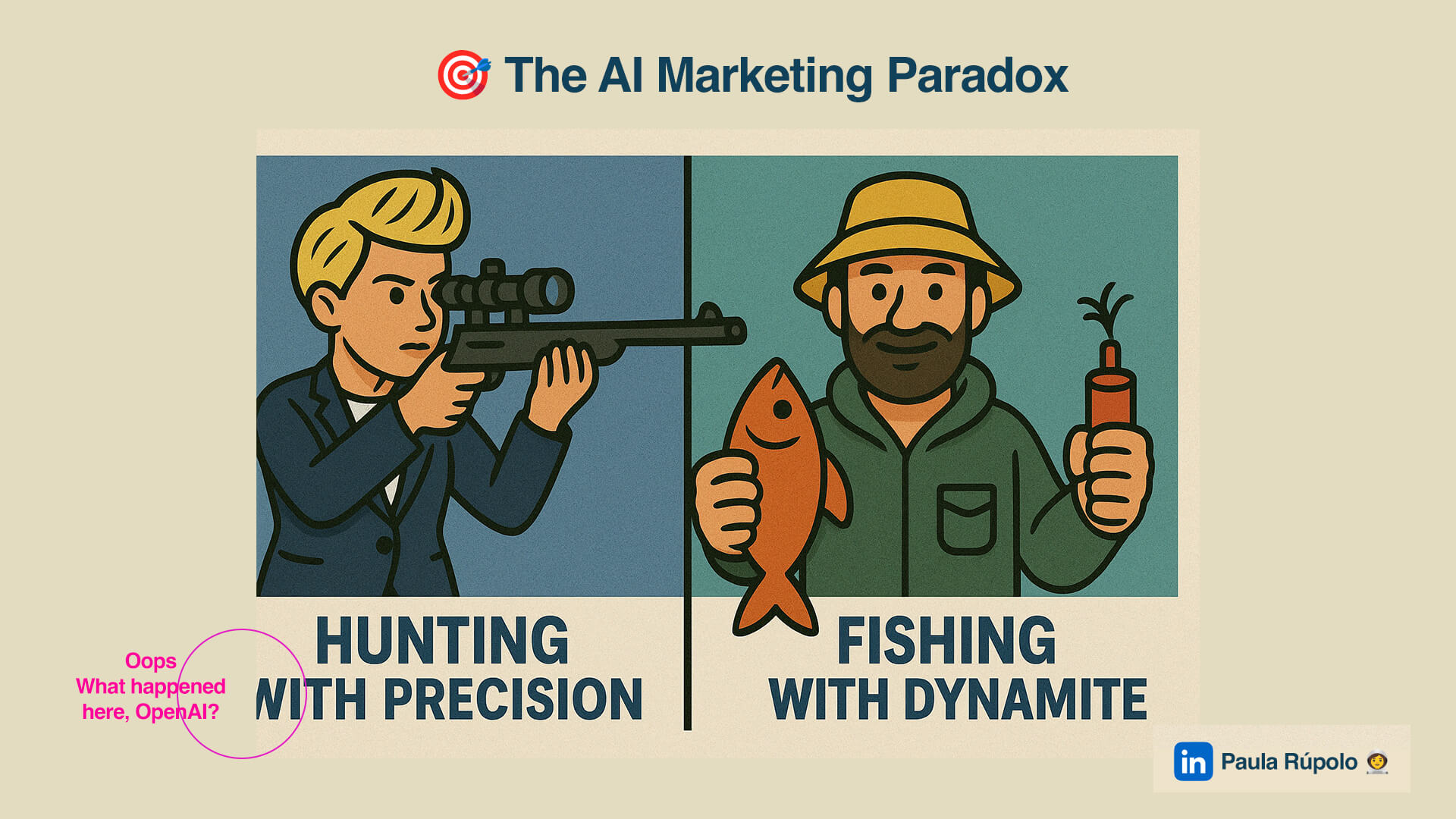Less is More — If You Know Where to Aim.
In today’s ever-changing digital business landscape, companies are confronting an uncomfortable truth that’s reshaping the marketing profession: success doesn’t necessarily come from expanding marketing teams, but rather from employing more precise marketing talent.
The Precision Paradox
Companies aren’t reducing marketing budgets because they can’t afford them—they’re redirecting resources toward what they believe delivers measurable returns. Traditional marketing departments are being scrutinized as executives increasingly favor quantifiable outcomes over theoretical brand-building exercises.
This shift isn’t just about cost-cutting; it reflects a fundamental change in how businesses perceive marketing value. The era of “more is more” marketing strategies has died alongside the deflation of startup valuations that characterized 2021’s investment landscape.
“Every dollar must have a purpose, every campaign must have a measurable objective, every initiative must bring you closer to the next signup or sale.”
AI’s Disruptive Role
Artificial intelligence has become both a blessing and a threat to us, marketing professionals. Modern AI tools can now perform or optimize numerous marketing functions with remarkable effectiveness:
→ Generating content at scale
→ Personalizing customer communications
→ Optimizing ad spend in real-time
→ Analyzing consumer behavior patterns
→ Creating basic design assets
This technological evolution has led many organizations to question whether maintaining large marketing teams is necessary when automated solutions can handle much of the workload at a fraction of the cost.
Rising Expectations, Stagnant Compensation
While marketing budgets contract, performance expectations continue to climb. Marketers are facing increased pressure to demonstrate direct impact on revenue while working with fewer resources. However, this heightened responsibility rarely translates to proportional compensation increases.
As a recent study from Deloitte suggests, CMOs are being asked to do more with less while shouldering greater accountability for business outcomes than ever before.
The 5% Reality
Perhaps the most challenging aspect of modern marketing is the widely acknowledged truth that only approximately 5% of potential customers are actively in buying mode at any given time. This means 95% of people possibly reached by marketing campaigns aren’t ready to make a purchase when marketers want them to.
This reality exists against a backdrop of unprecedented message saturation. The average consumer encounters thousands of brand messages daily across multiple platforms, making it increasingly difficult for any single message to break through.
As Harvard Business Review notes, attention has become perhaps the scarcest resource in marketing today, forcing brands to rethink their engagement strategies fundamentally.
The Short-Term Obsession
Despite overwhelming evidence supporting the value of long-term brand building, many organizations continue to resist investing in “slow-burn” marketing activities:
→ Developing quality evergreen content
→ Building brand authority
→ Establishing strategic partnerships and collaborations
→ Creating thought leadership
This resistance stems partly from the difficulty in attributing direct revenue to these activities in the short term, despite research from the Marketing Science Institute demonstrating their superior long-term ROI.
The Marketing Paradox in the era of AI
This creates a fundamental paradox for modern marketers:
-
- Surgical Precision Required: Today’s marketing must be laser-focused—identifying exact opportunities, aiming with precision, and executing flawlessly. There’s no room for waste or experimentation when every penny is scrutinized.
-
- Outdated Toolkit: Yet many marketers find themselves equipped with tools and strategies designed for a different era. They have “bullets for a gun they don’t quite know how to maintain,” and whose warranty has long expired.
Marketing professionals must now demonstrate concrete sales opportunities or risk being viewed as a luxury rather than a necessity. The stakes couldn’t be higher in an environment where marketing budgets are often the first to be trimmed during economic uncertainty.
Navigating the New Reality
Successful marketers in this new economy share several characteristics:
→ They understand both creative and analytical aspects of marketing
→ They can directly connect marketing activities to revenue generation
→ They focus on high-leverage opportunities rather than broad campaigns
→ They embrace technology as an enabler rather than a threat
→ They balance short-term activation with long-term brand building
As McKinsey & Company observes, the most effective marketing organizations today operate with a “precision marketing” mindset that combines data-driven insights with creative excellence.
The Final Question
For marketing professionals navigating this challenging landscape, the fundamental question becomes increasingly clear:
Are you hunting with precision—focusing resources on high-probability targets with customized approaches—or still fishing with dynamite, hoping broad, untargeted efforts will somehow yield results?
The answer to this question may well determine whether your marketing function is viewed as an essential growth driver or an expendable cost center in the new marketing economy.
Related articles:
-
– Build a Future-Proof Data-Driven Marketing Strategy for 2025 – by Jessica Jacobs
-
– The Multiplier Effect: A CMO’s Guide to Brand-Building in the Performance Era – by Adam Tremblay / Kate Price / Marisa Mulvihill
Also published on:
— LinkedIn


